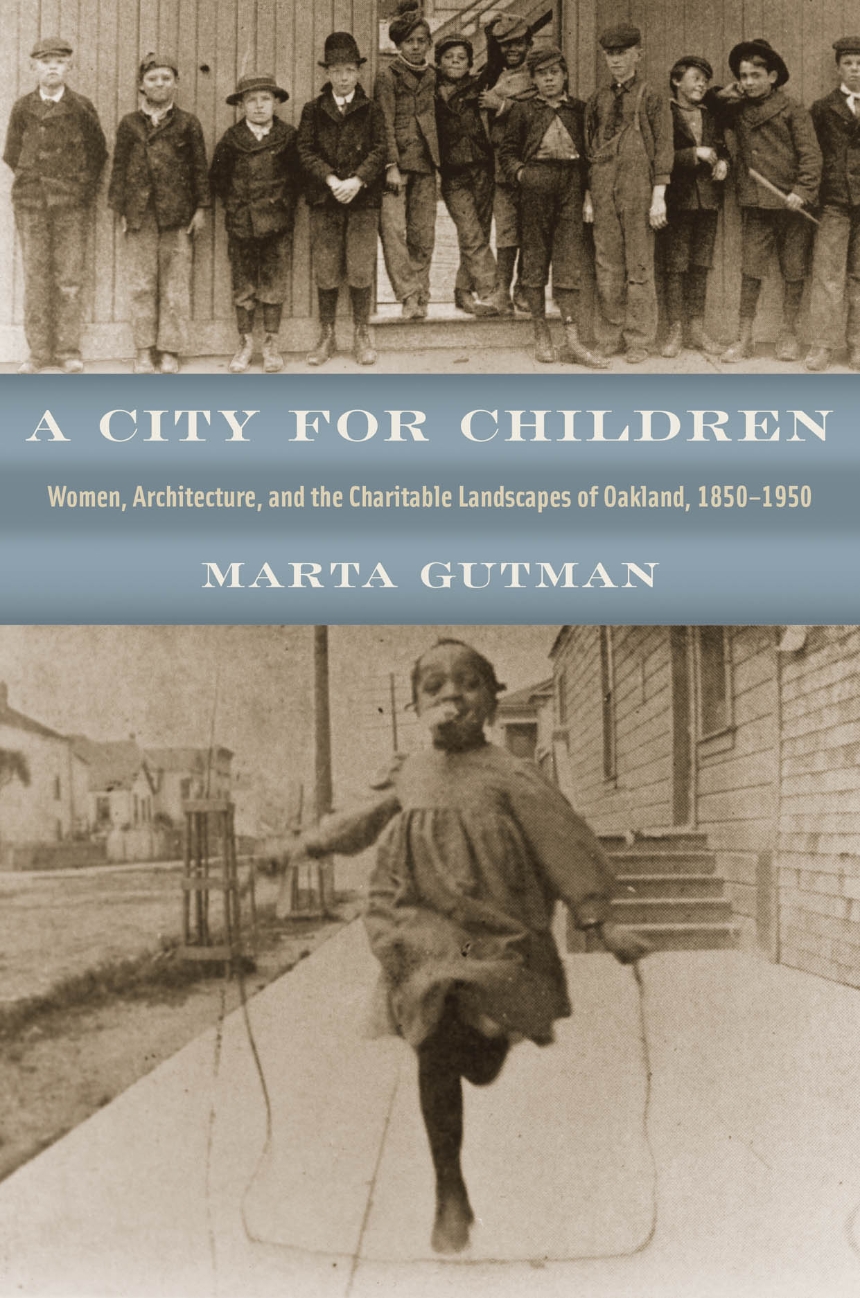A City for Children
Women, Architecture, and the Charitable Landscapes of Oakland, 1850-1950
A City for Children
Women, Architecture, and the Charitable Landscapes of Oakland, 1850-1950
In A City for Children, Marta Gutman focuses on the use and adaptive reuse of everyday buildings in Oakland, California, to make the city a better place for children. She introduces us to the women who were determined to mitigate the burdens placed on working-class families by an indifferent industrial capitalist economy. Often without the financial means to build from scratch, women did not tend to conceive of urban land as a blank slate to be wiped clean for development. Instead, Gutman shows how, over and over, women turned private houses in Oakland into orphanages, kindergartens, settlement houses, and day care centers, and in the process built the charitable landscape—a network of places that was critical for the betterment of children, families, and public life. The industrial landscape of Oakland, riddled with the effects of social inequalities and racial prejudices, is not a neutral backdrop in Gutman’s story but an active player. Spanning one hundred years of history, A City for Children provides a compelling model for building urban institutions and demonstrates that children, women, charity, and incremental construction, renovations, alterations, additions, and repurposed structures are central to the understanding of modern cities.
448 pages | 120 halftones, 14 line drawings | 6 x 9 | © 2014
Historical Studies of Urban America
Architecture: American Architecture, History of Architecture
Education: History of Education
History: American History, Urban History
Reviews
Table of Contents
Acknowledgments
ONE / New Ideas from Old Things in Oakland
TWO / The Landscape of Charity in California: First Imprints in San Francisco
THREE / The Ladies Intervene: Repurposed and Purpose-Built in Temescal
FOUR / The West Oakland Home: The “Noble Work for a Life Saving” of Rebecca McWade
FIVE / The Saloon That Became a School: Free Kindergartens in Northern California
SIX / The Art and Craft of Settlement Work in Oakland Point
SEVEN / “The Ground Must Belong to the City”: Playgrounds and Recreation Centers in Oakland’s Neighborhoods
EIGHT / Orphaned in Oakland: Institutional Life during the Progressive Era
NINE / Childhood on the Color Line in West Oakland: Day Nurseries during the Interwar Years
Epilogue
Oral Histories and Interviews
Abbreviations Used in the Notes
Notes
Index
Awards
Langum Charitable Trust: Gene E. and Adele R. Malott Prize for Recording Community Activism
Won
Center for Historic Preservation - University of Mary Washington: Historic Preservation Book Prize
Won
Urban History Association: Kenneth Jackson Award
Won
Society of Architectural Historians: Spiro Kostof Book Award
Won
